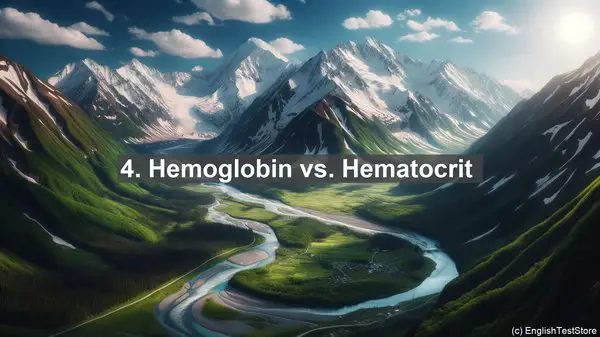Introduction
Welcome to today’s biology class. In this lesson, we’ll be discussing the top 10 commonly confused words in hematopoietic biology. Understanding these terms is crucial for a comprehensive grasp of this field. So, let’s dive in!

1. Hematopoiesis vs. Hemostasis
Often, students confuse hematopoiesis with hemostasis. While hematopoiesis refers to the process of blood cell formation, hemostasis is the body’s mechanism to stop bleeding. Remember, hematopoiesis is about cell production, while hemostasis is about clotting.
2. Erythrocytes vs. Leukocytes
Erythrocytes and leukocytes are two types of blood cells, but they have different functions. Erythrocytes, or red blood cells, transport oxygen, while leukocytes, or white blood cells, are involved in the immune response. So, erythrocytes are for oxygen, and leukocytes are for immunity.
3. Myeloid vs. Lymphoid
When it comes to cell lineages, myeloid and lymphoid are often confused. Myeloid cells give rise to red blood cells, platelets, and certain types of white blood cells. On the other hand, lymphoid cells are responsible for producing lymphocytes, a type of white blood cell. Remember, myeloid is for red cells, platelets, and some white cells, while lymphoid is for lymphocytes.
4. Hemoglobin vs. Hematocrit
Hemoglobin and hematocrit are both related to blood, but they measure different things. Hemoglobin is the protein in red blood cells that carries oxygen, while hematocrit is the percentage of red blood cells in the total blood volume. So, hemoglobin is about oxygen-carrying, and hematocrit is about red cell percentage.

5. Thrombosis vs. Embolism
Thrombosis and embolism are both conditions related to blood clots, but they occur at different sites. Thrombosis is the formation of a clot within a blood vessel, while embolism is when a clot travels and blocks a vessel elsewhere. So, thrombosis is a clot at the site, and embolism is a clot that has moved.
6. Anemia vs. Polycythemia
Anemia and polycythemia are two conditions that affect the number of red blood cells. Anemia is a decrease in red blood cells or hemoglobin, leading to reduced oxygen-carrying capacity. Polycythemia, on the other hand, is an increase in red blood cells, which can make the blood thicker. So, anemia is low red cells, and polycythemia is high red cells.
7. Granulocytes vs. Agranulocytes
Granulocytes and agranulocytes are two types of white blood cells. Granulocytes have granules in their cytoplasm, while agranulocytes do not. Examples of granulocytes include neutrophils, eosinophils, and basophils, while lymphocytes and monocytes are agranulocytes. So, granulocytes have granules, and agranulocytes do not.
8. Hematopoietic Stem Cells vs. Progenitor Cells
Hematopoietic stem cells and progenitor cells are both involved in blood cell production, but they have different roles. Hematopoietic stem cells are undifferentiated cells that can give rise to any type of blood cell, while progenitor cells are more specialized and can only produce certain types of cells. So, stem cells are versatile, and progenitor cells are more limited.
9. Hemolysis vs. Hemorrhage
Hemolysis and hemorrhage are both related to blood, but they involve different processes. Hemolysis is the rupture or destruction of red blood cells, while hemorrhage is the escape of blood from a blood vessel. So, hemolysis is about red cell destruction, and hemorrhage is about blood vessel leakage.
10. Hematoma vs. Ecchymosis
Hematoma and ecchymosis are both types of blood collections, but they differ in location. A hematoma is a localized collection of blood outside the blood vessels, often forming a clot. Ecchymosis, on the other hand, is the medical term for a bruise, which is a collection of blood under the skin. So, hematoma is a collection outside vessels, and ecchymosis is a bruise under the skin.
